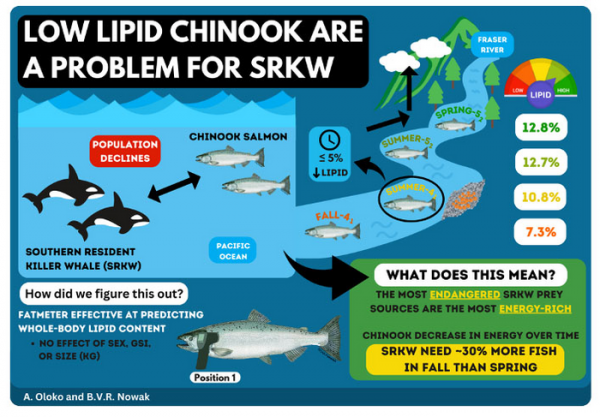Not all Chinook salmon are created equal, and this has a major impact on the energetics for southern resident killer whales. A recent study quantified the lipid content in Fraser River Chinook salmon – the southern resident’s preferred meal – and found that spring-run Chinook salmon, the earliest to arrive to the Salish Sea are lipid-rich and energy dense; a critical factor for the killer whales who prey on them. Fraser River Chinook salmon that come later in the season have lower energy density.
“This research helps us quantify the energetic requirements of the southern residents,” said Jacob Lerner, lead author of the study and a doctoral student in the Pelagic Ecosystems Lab at the Institute for the Oceans and Fisheries. “For example, if the southern residents ate just low-lipid salmon, they would have to eat around 80,000 more Chinook salmon every year than if they just ate high-lipid salmon.”
Southern resident killer whales are an iconic species in British Columbia’s Salish Sea and down the northeastern Pacific coast. With black and white markings, these marine mammals can weigh up to 12,000 pounds and be up to 26 feet long. They are fierce, social creatures that live and hunt in family group pods. And, sadly, there are only 73 left in the world.
Read more at: University of British Columbia
Low lipid Chinook are a problem for SRKW (Photo Credit: Infographic © Ayodele Oloko and Benia Nowak)


